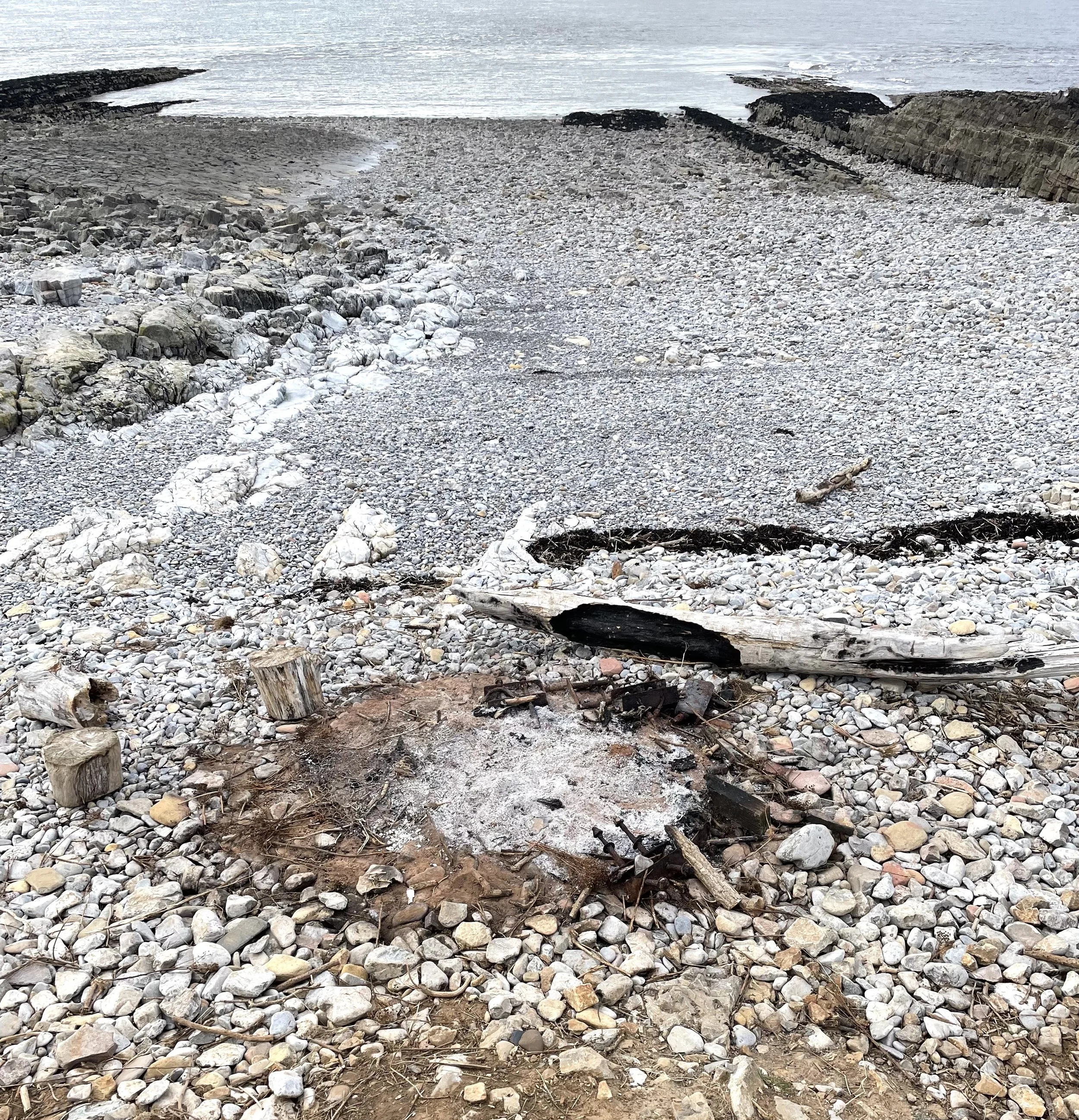This time there are no gulls, leaving the shredded nests, chicken bones, remnants of rabbits.
The sky is higher because of this, without the screaming blanket of birds, and the light is beautiful.
There are patches of scrubland, neatly maintained paths and broken buildings lying in organised piles.
The gulls move back and forth across the channel, connecting the island with the mainland, picking rubbish from the dump to bring home,
As scavengers, home-makers, parents.
This is the same path the telegram took, taking communication across the water for the first time
Are you ready?
The back and forth across the brown, mud-filled tides keeps the island in flux, bringing back in their beaks bits of fried chicken, scraps of rope, discarded objects and plant-life
To eat, to build nests for their young with, to keep.
The rabbit bones mix with fried chicken limbs, and small, toothed skulls are littering the paths.
The romantic notion of the island gives way to talk of botulism and myxomatosis, and the warden shows me the fire pit where the infected gulls are burned.
He tells me that unfortunately gulls can have cannibalistic tendencies and that by eating each other the problem is exacerbated.
I kneel down and find a flat stone, good for scooping the ash into the ziplock bag.
The ash is a beautiful white and there are tiny delicate bones - vertebrae, skulls, long pale grey-white lengths which are brittle and crumble.
There are charred parts at the edges, heads and wings, that have missed this final transformational part of the process.
They are black and sad and frightening.
I look up across at the water, glorious sunshine, yellow lichen on rocks, succulents clinging and thriving.
(2023)
‘Telegram’ Archival Inkjet Print + Text (60cm x 60cm) (2022)
